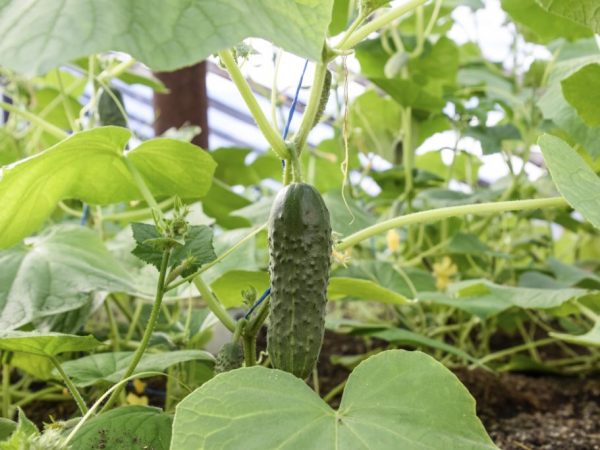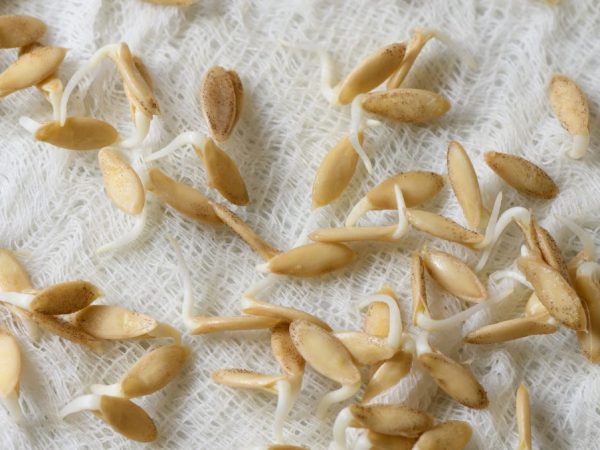Why do you need boric acid for cucumbers
Every gardener who grows a particular crop has probably heard about boron and its use in agriculture. The fact is that boric acid for cucumbers or orthoboric acid (chemical formula H3BO3) is a fairly effective fertilizer, which is usually used for feeding cucumbers and tomatoes.

The use of boric acid for cucumbers
Boric acid use
At the moment, the choice of fertilizers is wide enough, the consumer can find a tool that will satisfy all the requirements, and its price will not be too expensive. However, along with ready-made types of preparations for feeding vegetables, folk remedies began to be forgotten, which are in no way inferior to store-bought ones, but at the same time cost an order of magnitude cheaper. One of the famous folk methods is spraying cucumbers with boric acid.
The fact is that, provided there is a sufficient amount of boron in the soil, the chance to harvest a larger crop increases sharply, in addition, it should be said that the quality of the crop increases, since the plant is better able to withstand various parasites and pests. It should also be said that boric acid for cucumbers can act as an independent agent or be one of the components of a mixture or feeding solution. Next, we will talk in more detail about the benefits of boric acid for cucumbers and tomatoes.
Features of feeding
Fertilizing cucumbers with boric acid can and should be done at all stages of the plant. In general, it is noted that cucumbers can be fertilized up to 3 times during the whole vegetative period. It should be said that feeding with boron not only improves the growth of the vegetable, but also positively affects the taste and aroma, adding sugar to the vegetable.
Useful qualities
First of all, it is worth noting that the use of boron is optimal if vegetables are grown in podzolic or forest soil. Although the use of this fertilizer even in the most fertile black soil bears fruit, as noted by experienced gardeners.
The benefits of boron are as follows:
- The number of ovaries on the bush increases
- There is a powerful stimulation of root growth as well as leaves
- Judging by the reviews, after using boron, the taste of the vegetable is significantly improved, it becomes crispy and even sweetish
Knowing what useful qualities boron has, you can spray both cucumber bushes and tomatoes, even if you grow vegetables in a greenhouse. All you need is to figure out how to properly dilute boron with water, as well as choose the right time for fertilization. It is worth saying that it is best to fertilize the soil for cucumbers during the flowering of the vegetable, since it is during this period that new growth points are formed, as well as the strengthening of the already formed ones.
Consequences of Boron Deficiency
You can easily determine if the crop received less boron during the growing stage.Here are the most obvious and common signs:
- Internodes are shortened
- The bush stops growing upward, dwarfism is noted
The first signs can be seen already on a young bush; you should pay attention to the appearance of the upper leaves. To the touch, they become more hard, thickened and dense, in addition, you can see that their edges are bent downward.
In the case when the boron content in the soil tends to zero, the worst happens - whole ovaries and inflorescences fall off, while, of course, the shoots also suffer, becoming more brittle and dry. If you look underground after planting, you can see that the root system also changes, the roots turn orange or turn yellow, become less developed. A characteristic feature is the growth of shoots on the sides of the stem, however, they die off quickly enough, immediately after the first leaves grow.
Separately, it should be said that the absence of H3BO3 in fertilizers negatively affects the plant's resistance to diseases and pests. So, the chance of damage to the bush by such an insidious disease as dry rot, brown rot or bacteriosis increases sharply. We will find out at what time it is advisable to feed the cucumbers with orthoboric acid, and in what the effect of such fertilization will manifest itself.
Fertilizing before sowing

Seeds are recommended to be treated with boron solution
It is a well-known fact that the first stage of development of many plants begins with a small seed, cucumber is no exception. In order for the cucumber seed to be taken into the soil after planting, it is recommended to carry out a special foliar treatment, which can be done at home. Usually, gardeners use folk remedies such as ash, potassium permanganate and even aloe juice. Today we will tell you how to process seeds with orthoboric acid. Immediately after the best quality seeds have been selected for seedlings, it is worth placing them in a boron solution for a period of about 12 hours. Today we will talk about two methods for preparing a solution based on the described fertilizer.
The first way
To use the first recipe for preparing seed solution, you will need:
- Boiled hot water - 1 liter
- Boron - 0.2 grams
You should dissolve the powder in water, then place the prepared cucumber seeds in it, the exposure time of the solution does not change and is 12 hours. It is important to note that cucumber seeds are quite small and light, respectively, according to the laws of physics, after being placed in a liquid, they will quickly appear on the surface of the container, which is highly undesirable. To prevent this from happening, it is recommended to place all seeds in a gauze bag. It is worth saying that after this procedure, after a while the seedlings need to be re-sprayed, usually, this is done after 2-3 weeks, using foliar treatment.
Second way
In this recipe, new ingredients appear, namely, onion husks, wood ash, potassium permanganate, soda. First, you still need to choose the highest quality seeds, since the quality of the future harvest will depend on this. After that, prepare an infusion based on onion peels. To prepare it, you need to place the husk in hot water (1 liter), then let it brew for 4-5 hours.
While the infusion is infusing, mix the remaining ingredients. Add 5 tablespoons of wood ash, baking soda (5 grams), H3BO3 (0.2 grams), manganese (no more than 1 gram) to a liter of hot water. It should be said that this option for preparing the solution is preferable, although it is more difficult to prepare. The fact is that in this version, the seeds not only undergo thorough disinfection, but are also saturated with useful trace elements and minerals.
Fertilization at the growing stage
If you have chosen the seedling method of growing cucumbers, then you can carry out foliar processing of the seedlings just before planting them in the soil in the garden. In this case, you can use the methods for preparing a solution for irrigation, which were given earlier, the ingredients and proportions remain unchanged.
It is worth saying that with such watering, the plant will still need to re-spray the cucumbers with a solution using boric acid. Usually this period falls on the moment the first 3-5 fully formed leaves appear on the bush.
Fertilizing during fruiting
It is especially important to stimulate the plant at the stage of the beginning of fruiting, the fact is that this procedure will help strengthen the roots, in addition, it will support the further growth and development of the bush.
It is worth noting that during the fruiting period the cucumber is often sick, feeding the cucumbers with boric acid will minimize the chances of being affected by diseases. It is noted that if the plant is watered in the above way, it will be able to survive stressful conditions, for example, changes in air temperature, without any problems, which will not entail the death of the ovaries. Of course, if we are talking about a greenhouse, then you can grow cucumbers even in winter.
Feeding Tips
So that feeding does not go to harm, it is worth following some rules:
- In no case should you independently increase the proportions of boric acid content in the soil.
- It is necessary to spray or spray cucumbers with boric acid not on a sunny day, but best of all in the evening, otherwise burns on the leaves may appear. It is worth once to water the bushes under the scorching sun, there is a risk of losing the harvest.
Many are interested in the question of whether spraying with boric acid can harm the culture, especially novice gardeners are interested in foliar feeding. The answer is unequivocally negative, on the contrary, a folk remedy is aimed at increasing the yield of a vegetable, as well as significantly improving its quality.


